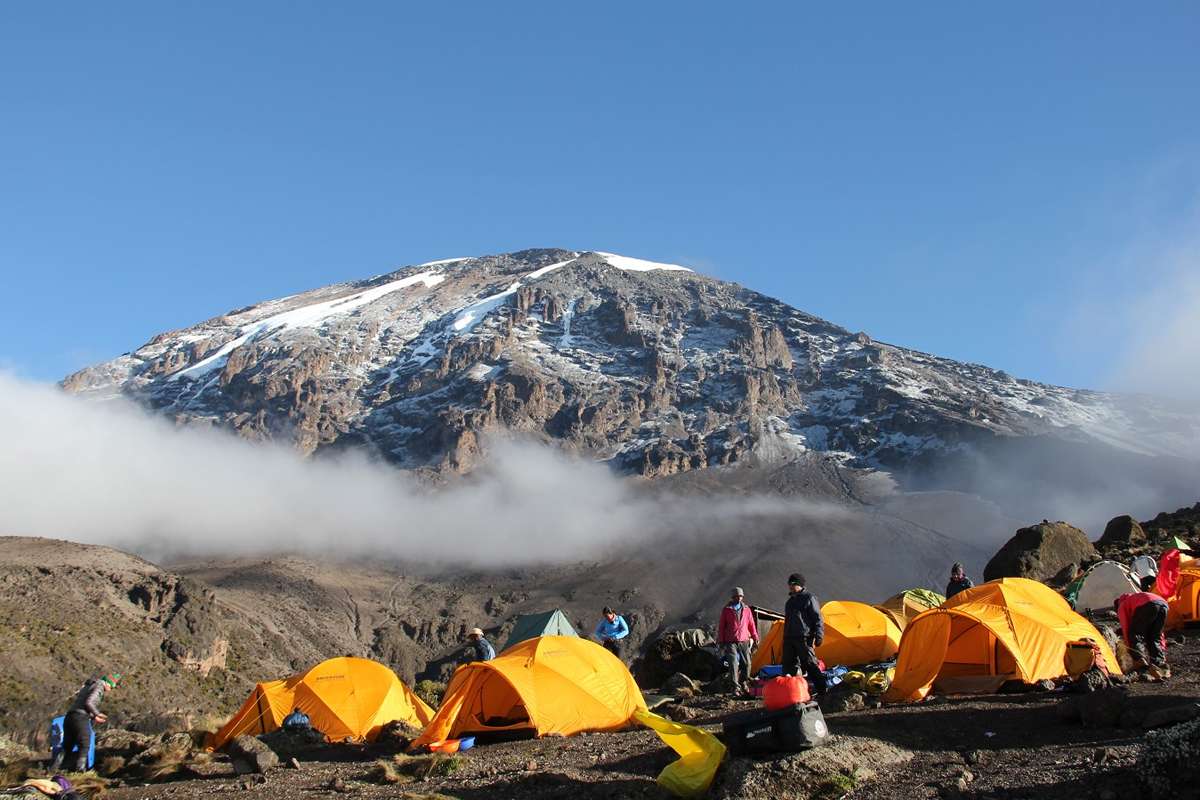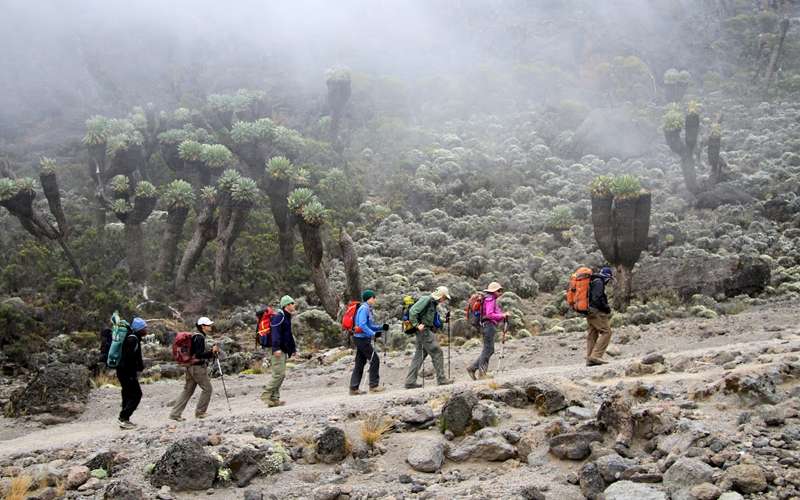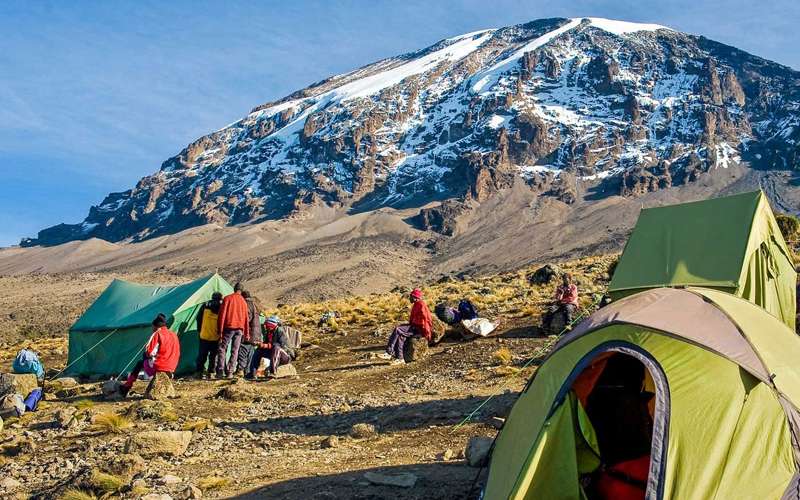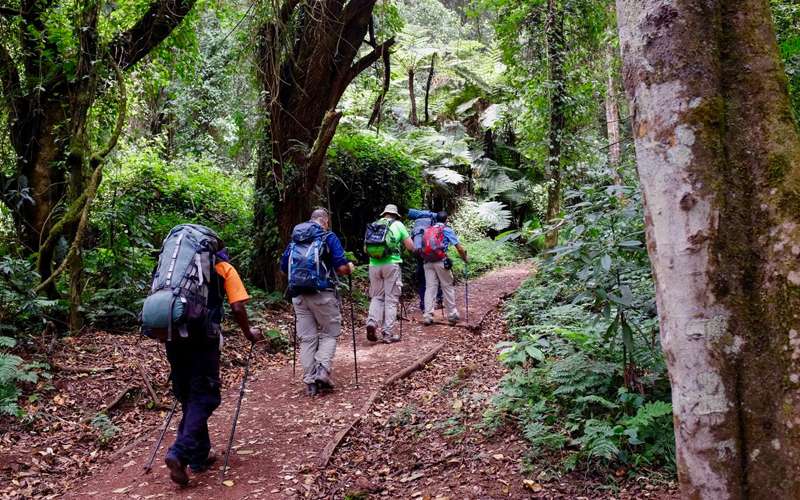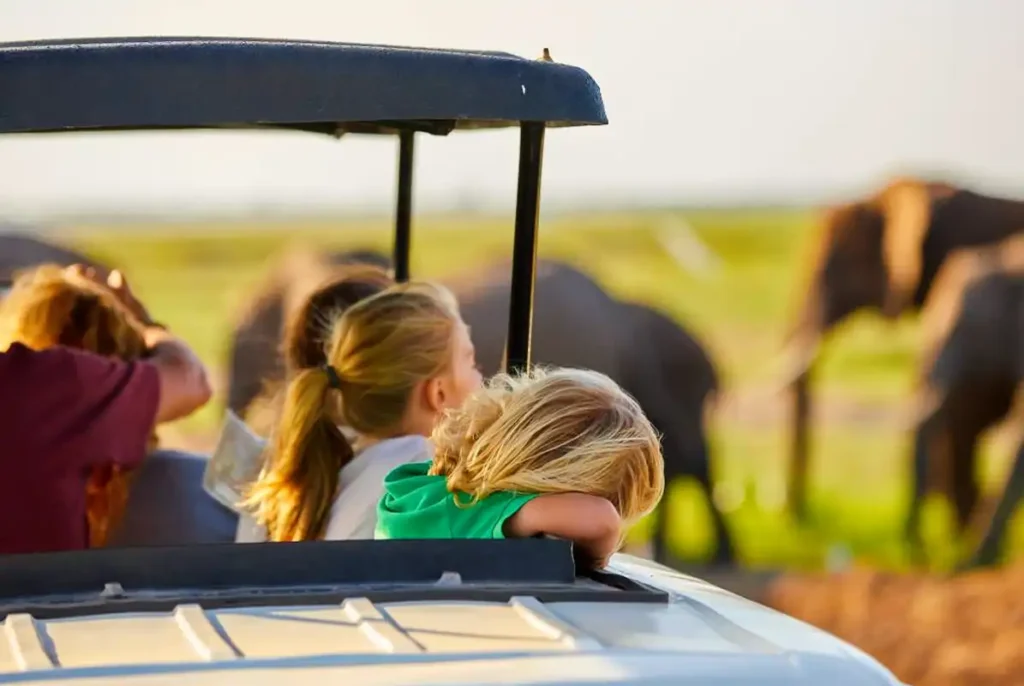Mount Kilimanjaro, towering at 5,895 meters (19,341 feet), is Africa’s highest peak and a dream destination for trekkers worldwide. Known as the “Roof of Africa,” Kilimanjaro offers multiple routes to its summit, each with unique challenges and scenic landscapes. The Lemosho Route is celebrated for its beauty, gradual ascent, and high success rates.
Why Choose the Lemosho Route?
- Unique Features: The Lemosho Route stands out for its scenic diversity and lower foot traffic compared to other routes. Starting on the western side of the mountain, it traverses lush rainforest, alpine moorland, and barren lunar landscapes before reaching the summit. Its gradual ascent allows for better acclimatization, making it one of the preferred routes for climbers aiming to reach Uhuru Peak.
- Scenery and Biodiversity: The route’s path through untouched wilderness areas means trekkers can experience the rich biodiversity of Kilimanjaro. From the dense rainforests teeming with wildlife to the stark beauty of the Shira Plateau, the Lemosho Route offers stunning and varied landscapes.
Preparation for the Climb
- Physical Fitness and Training: Climbing Kilimanjaro demands good physical fitness and endurance. A comprehensive training regimen that includes cardiovascular exercises, strength training, and hiking with a loaded backpack is essential. Preparing your body for the physical demands of the trek will enhance your overall experience and increase your chances of reaching the summit.
- Necessary Gear and Equipment
Packing the right gear is crucial for a successful climb. Essential items include:
- Clothing: Layered clothing to adapt to varying temperatures, including thermal base layers, insulating mid-layers, and waterproof outer layers.
- Footwear: Sturdy, comfortable hiking boots and quality trekking socks.
- Accessories: Hats, gloves, sunglasses, and trekking poles.
- Backpack: A daypack for personal items and a larger pack for porters to carry.
Detailed Itinerary of the Lemosho Route
- Day-by-Day Breakdown
- Day 1: Londorossi Gate to Mti Mkubwa (Big Tree) Camp
- Elevation: 2,100m to 2,650m
- Terrain: Rainforest
- Distance: 6 km (3.7 miles)
- Day 2: Mti Mkubwa to Shira 1 Camp
- Elevation: 2,650m to 3,500m
- Terrain: Moorland
- Distance: 8 km (5 miles)
- Day 3: Shira 1 Camp to Shira 2 Camp
- Elevation: 3,500m to 3,850m
- Terrain: Moorland
- Distance: 8 km (5 miles)
- Day 4: Shira 2 Camp to Lava Tower to Barranco Camp
- Elevation: 3,850m to 4,600m (Lava Tower) then down to 3,900m
- Terrain: Alpine Desert
- Distance: 10 km (6.2 miles)
- Day 5: Barranco Camp to Karanga Camp
- Elevation: 3,900m to 4,035m
- Terrain: Alpine Desert
- Distance: 5 km (3.1 miles)
- Day 6: Karanga Camp to Barafu Camp
- Elevation: 4,035m to 4,640m
- Terrain: Alpine Desert
- Distance: 4 km (2.5 miles)
- Day 7: Barafu Camp to Uhuru Peak to Mweka Camp
- Elevation: 4,640m to 5,895m (summit) then down to 3,100m
- Terrain: Arctic Summit and Rainforest
- Distance: 17 km (10.6 miles)
- Day 8: Mweka Camp to Mweka Gate
- Elevation: 3,100m to 1,640m
- Terrain: Rainforest
- Distance: 10 km (6.2 miles)
- Key Highlights and Landmarks
- Londorossi Gate: Entry point where climbers register and begin their journey.
- Shira Plateau: Offers panoramic views and a sense of vastness.
- Lava Tower: A significant acclimatization point and a striking geological feature.
- Barranco Wall: A challenging but rewarding scramble with breathtaking views.
Acclimatization and Altitude Sickness
- Importance of Acclimatization: Proper acclimatization is crucial to prevent altitude sickness. The Lemosho Route’s extended itinerary and gradual ascent allow the body to adapt to the high altitudes more effectively, reducing the risk of altitude-related issues.
- Tips for Preventing Altitude Sickness
- Hydration: Drink plenty of fluids to stay hydrated.
- Pacing: Walk slowly and steadily, allowing your body to adjust.
- Diet: Eat light, high-energy meals to maintain your strength.
- Medication: Consult with a healthcare provider about taking altitude sickness medication like Diamox.
Guides and Porters
- Role of Guides and Porters: Guides and porters are integral to a successful Kilimanjaro climb. Guides offer expertise, support, and encouragement, while porters carry gear, set up camps, and ensure climbers’ comfort and safety.
- Tipping and Etiquette: Tipping is customary and appreciated. It’s a way to acknowledge the hard work and dedication of the guides and porters. Typically, tips are given at the end of the climb, with amounts varying based on the length of the trek and the size of the group.
Campsites Along the Lemosho Route
- Description of Each Campsite
- Mti Mkubwa (Big Tree) Camp: Located in the rainforest, offering basic facilities.
- Shira 1 and Shira 2 Camps: Situated on the Shira Plateau, providing stunning views of the mountain and surrounding landscapes.
- Barranco Camp: Known for its proximity to the Barranco Wall, offering incredible sunset views.
- Karanga Camp: A mid-way stop before the final ascent to Barafu.
- Barafu Camp: The final base camp before the summit push.
- Facilities and Amenities: Campsites on the Lemosho Route provide tents, communal dining areas, and basic sanitation facilities. Porters set up and dismantled camps, ensuring a smooth and comfortable trekking experience.
Wildlife and Flora on the Lemosho Route
- Unique Species and Vegetation: The Lemosho Route traverses various ecological zones, each home to unique wildlife and flora. From colobus monkeys in the rainforest to giant lobelias and senecios in the alpine zones, climbers can encounter a variety of species along the way.
- Conservation Efforts: Tanzania’s national park authorities and conservation organizations work tirelessly to protect Kilimanjaro’s natural habitats. Climbers are encouraged to respect wildlife, stay on designated trails, and adhere to conservation guidelines.
Cultural Experiences
- Interactions with Local Communities: Trekkers on the Lemosho Route may interact with local Chagga people, who have lived in the region for centuries. These interactions offer insights into the local culture, traditions, and lifestyle.
- Cultural Significance of Kilimanjaro: Kilimanjaro holds deep cultural significance for the local communities. It is considered a sacred mountain and features prominently in local folklore and traditions.
Safety and Challenges
- Common Challenges Climbers Face: Climbers may face challenges such as altitude sickness, extreme weather, and physical fatigue. Proper preparation and acclimatization are key to overcoming these challenges.
- Safety Precautions and Emergency Procedures: Guides are trained in first aid and emergency procedures. It’s important to follow their instructions, report any symptoms of illness promptly, and carry essential medications and emergency supplies.
Best Time to Trek
- Seasonal Weather Conditions: Kilimanjaro has two main trekking seasons: January to mid-March and June to October. These periods offer the best weather conditions for climbing, with clear skies and mild temperatures.
- Recommended Months for Climbing: The most recommended months for climbing the Lemosho Route are January, February, and September. These months offer favorable weather and fewer crowds, enhancing the trekking experience.
Sustainable Trekking Practices
- Leave No Trace Principles: Climbers should adhere to Leave No Trace principles to minimize their environmental impact. This includes packing out all trash, minimizing campfire impact, and respecting wildlife and local cultures.
- Supporting Local Economies: By hiring local guides and porters, purchasing local products, and staying in community-run accommodations, climbers can support the local economy and promote sustainable tourism.
The Lemosho Route offers an extraordinary trekking experience on Kilimanjaro, combining stunning landscapes, rich biodiversity, and cultural richness. With proper preparation, respect for the environment, and a spirit of adventure, climbers can achieve the unforgettable goal of reaching Uhuru Peak.
FAQs
How long does it take to climb the Lemosho Route?
The Lemosho Route typically takes 7 to 8 days to complete, including time for acclimatization and summit attempts.
What is the success rate for climbers on the Lemosho Route?
The success rate for climbers on the Lemosho Route is approximately 85%, due to its gradual ascent and extended itinerary.
How difficult is the Lemosho Route compared to other routes?
The Lemosho Route is considered moderately difficult, offering a good balance of challenge and acclimatization, suitable for climbers with a reasonable level of fitness.
What should I pack for the Lemosho Route trek?
Essential items include layered clothing, sturdy hiking boots, a good-quality sleeping bag, trekking poles, and sufficient water and snacks. A comprehensive packing list can help ensure you’re well-prepared.
Can beginners successfully climb Kilimanjaro via the Lemosho Route?
Yes, with proper preparation, training, and a positive mindset, beginners can successfully climb Kilimanjaro via the Lemosho Route. Engaging experienced guides and following acclimatization protocols is key to a successful ascent.
For an adventurous exploration of East Africa’s stunning mountains, delve into the following peaks on our page:
Discover detailed information and tips to plan your mountain expedition for an unforgettable experience.


